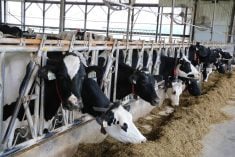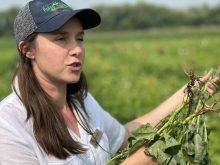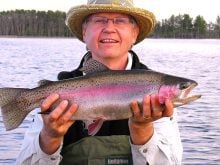Is Canada running short of fresh water?
That’s the question raised by a new study which says renewable water resources have fallen in the southern part of the country over the past three decades.
The Statistics Canada study found that the region, where 98 per cent of Canadians live, lost 8.5 per cent of its “water yield” between 1971 and 2004. That’s an average of 3.5 cubic kilometres a year, which is roughly equivalent to the volume of water supplied to Canada’s entire residential population in 2005, StatsCan reported Sept. 13.
Read Also

Local farm businesses, groups look forward to Manitoba Ag Days 2026
Most of agriculture is seemingly at Manitoba Ag Days each January: Manitoba agribusinesses and farm groups look forward to connecting with farmers at the 2026 show.
StatsCan defines water yield as the result of precipitation and melted ice that ultimately flows into rivers and lakes.
The loss was particularly strong on the Prairies, where the water yield declined by 0.56 cubic kilometres annually. That annual loss is equal to 80 per cent of all the water produced by drinking plants in the three provinces in 2005.
Agriculture was responsible for nearly five per cent of water used in the region in 2005. Irrigation took up 3.9 per cent and livestock consumed 0.8 per cent.
Hydro-electric power plants were by far the biggest user, with nearly two-thirds of total water use. Manufacturing’s share of water use was 13.6 per cent. Residential use was next at nine per cent.
Canadians usually see their country as having unlimited amounts of fresh water. StatsCan says Canada’s total annual renewable freshwater supply is 3,470 cubic kilometres, roughly equivalent to the volume of Lake Huron.
But the fact that Canadians appear to be using more water than Nature provides each year suggests the country’s fresh water supply may not be as limitless as thought.
Some scientists and officials expressed skepticism at the study’s findings.
Paul Bullock, a University of Manitoba soil scientist, said a lot of water in Western Canada never makes it to a river. A lot of rain and snow flow into sloughs and is never measured by a stream flow gauge.
Bullock noted the data in the report calculates 5,451 cubic kilometres of precipitation for the country but only 3,472 cubic kilometres of water yield. Some of the precipitation that disappears will be water internally drained in the Prairies.
“In other words, the picture painted for water yield on the Prairies may underestimate water resources to a significant degree, but I don’t think anyone knows for sure just how much,” Bullock said.
Ronald Stewart, head of the University of Manitoba’s environment and geography department, said the study examines a straight “linear” time period and doesn’t consider both extreme wet and dry periods during that time.
Stewart also noted the study used unregulated water flow for its data. That wouldn’t take into consideration the effect of dams, which most rivers on the Prairies have.
A spokesperson for Manitoba Water Stewardship said the 34-year hydrological period is rather short for such an analysis. It is also skewed by the fact that the early 1970s were a wet period in the West and the early 2000s were extremely dry, especially in Alberta and Saskatchewan, he said.
But Stewart said the issue of water availability on the Prairies is a crucial one which needs more study.
Stewart, an atmospheric scientist specializing in droughts, said the Prairie climate is one of the most extreme in the world and will become even more so as climate change takes hold. That means more periods of drought and also more episodes of excessive precipitation. [email protected]
———
“Thepicturepaintedforwateryieldonthe Prairiesmayunderestimatewaterresources.”
– PAUL BULLOCK














